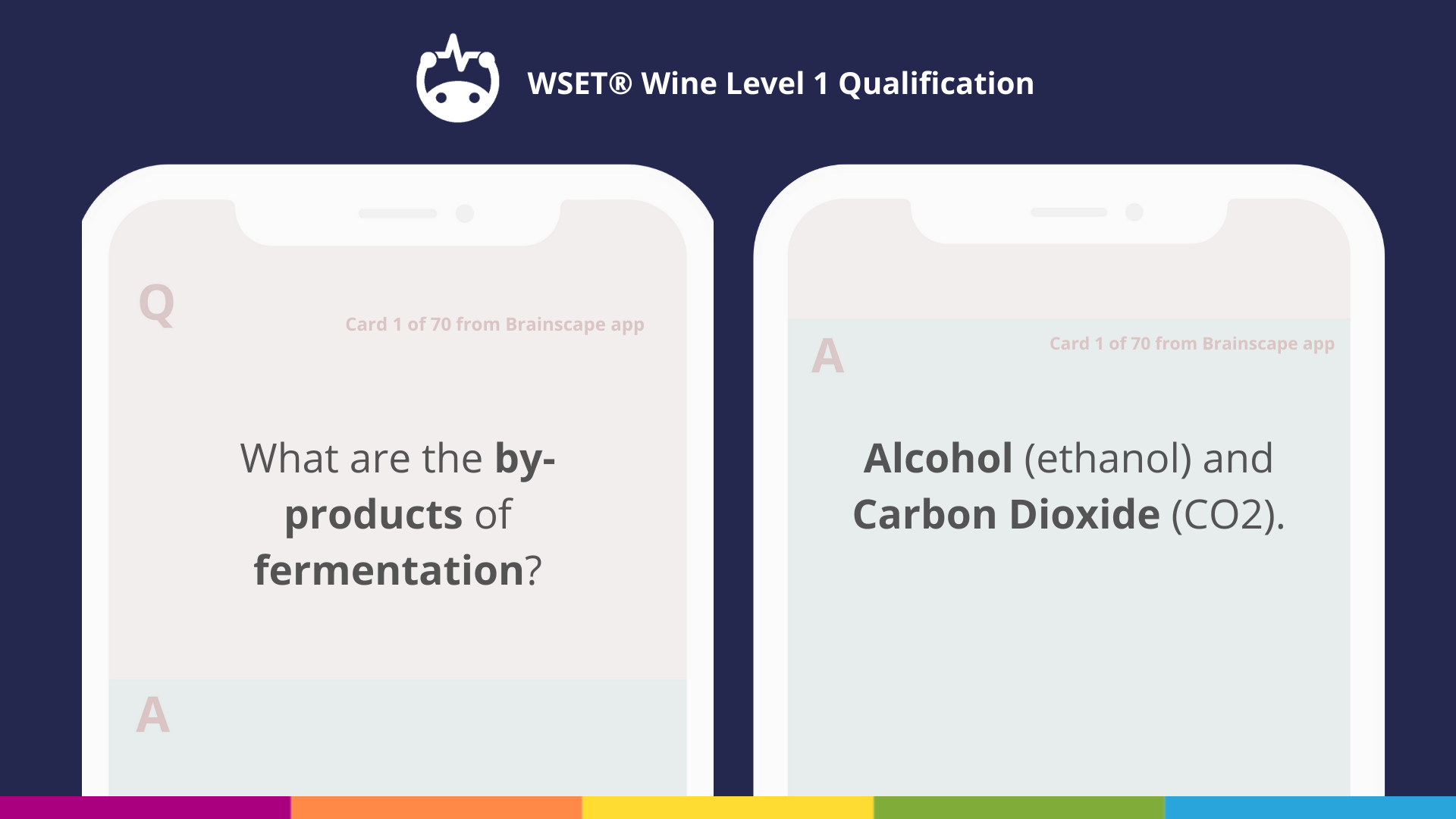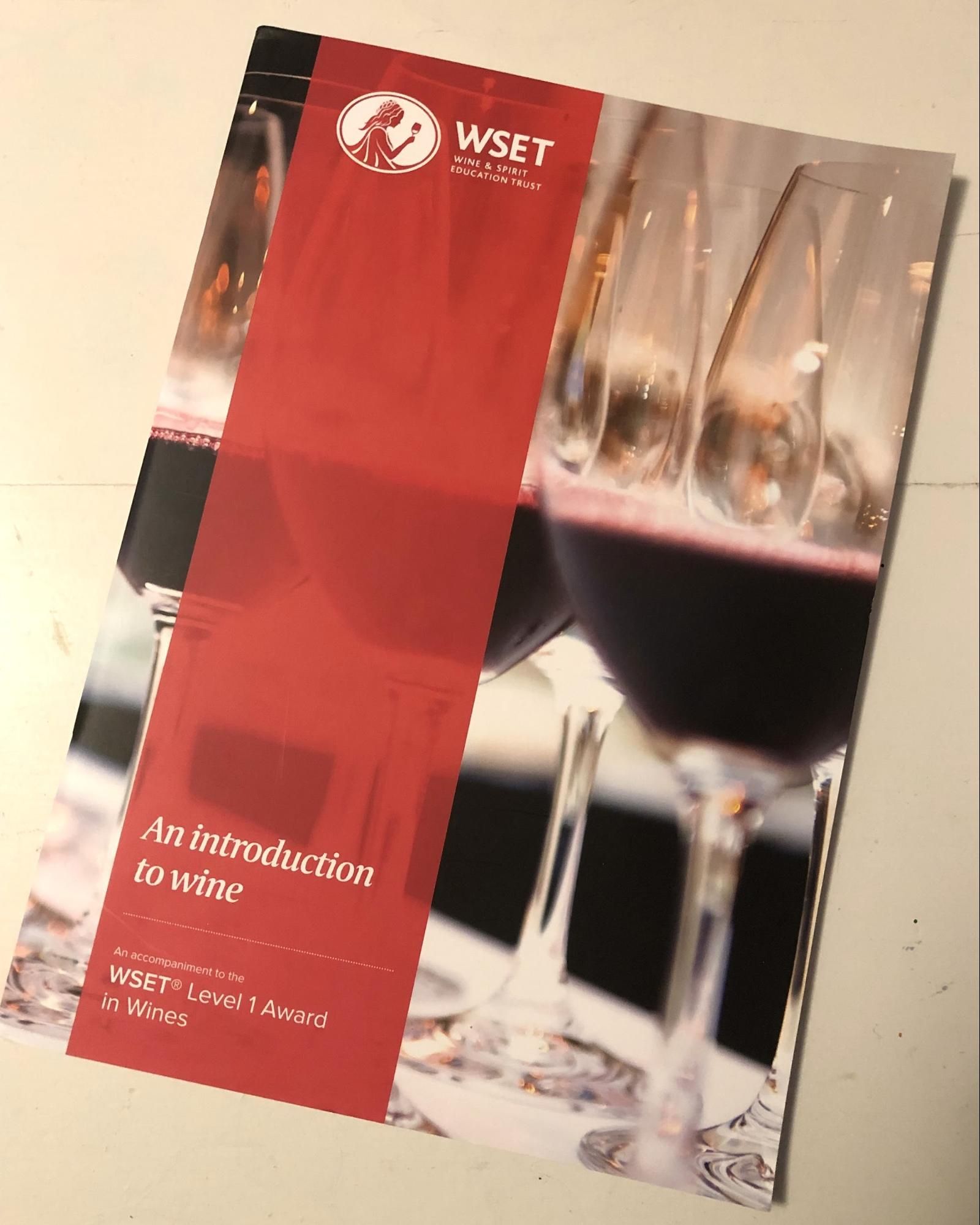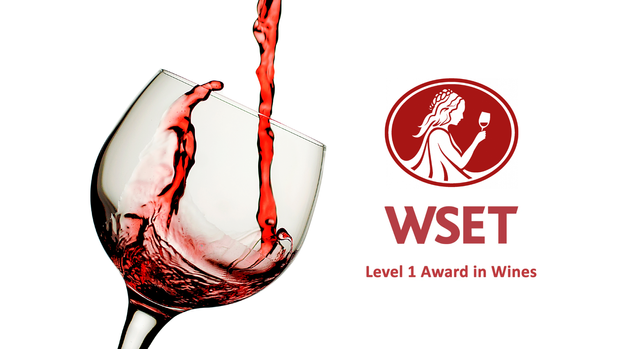You know next to nothing about wine.
Well, you know a red wine from a white wine...but not a Sauvignon Blanc from a Cabernet Sauvignon, and definitely not a Riesling from a Chardonnay.
But you want to because (1) you work in food / service / hospitality / marketing / journalism and some wine knowledge would greatly bolster your career opportunities; (2) you want to work in these industries but first, wish to educate yourself; or (3) you’re interested and would like to know more about wine for your own reasons.
And so you have decided to enroll for the WSET® * Level 1 qualification to get your wine education off to the finest possible start there is.
To aid you on your way, we consulted with our team of wine experts and wrote this WSET Level 1 study guide, which contains a suite of insider tips and study hacks on easily crushing this exam with distinction. (Hint: WSET 1 flashcards will help you learn everything you need to know really quickly... but we’ll get to that in a bit).
Okay, let's get started!
Pssst. Don't miss out on my interview with The Grape Explorer on everything you need to know about the WSET Level 1 exam...
What you’ll learn in this WSET Level 1 study guide
- Tip # 1: Know what to expect
- Tip # 2: Work through a practice exam early on in the course
- Tip # 3: Master the facts with Brainscape’s WSET 1 flashcards
- Tip # 4: Consolidate the facts as you go along
- Tip # 5: Stick to the WSET 1 textbook (most recent edition)
- Tip # 6: Complement your learning with some group study
- Tip # 7: Practice wine tasting
- Tip # 8: Don’t give a crap about what anyone else thinks!
WAIT! Could you be eligible for the WSET Level 2?
Did you know that many people who have already begun to explore the world of wine in an informal capacity SKIP the introductory WSET 1 course and go straight to the second tier of the WSET?
If you know where Burgundy is, what Chardonnay tastes like, and how to swish, sniff, and assess wine, you could very likely kick off your formal education with the prestigious WSET Level 2.
To learn more about it, check out Brainscape’s guide on what to expect from the WSET Level 2. You can also check out the WSET 2 official specifications handbook.
Study Tip 1: Know what to expect

Our first tidbit of advice is to learn what the WSET Level 1 demands of you so you can prepare, which also happens to be the perfect salve for exam anxiety.
For starters, the examination is a 45-minute, closed-book affair in which you must answer 30 multiple-choice questions on the following key learning outcomes:
- The key stages in grape growing and winemaking (6 questions),
- The types, characteristics, and styles of wines made from the world’s principal grape varieties (18 questions),
- The key principles and practices involved in storing and serving wine (6 questions).
So, before you face down the WSET Level 1 exam, you should be fully versed in:
- The main types and styles of wine
- Common wine grapes and their characteristics
- How to pair food and wine
- How to store and serve wine
- How to describe wine using the WSET Systematic Approach to Tasting Wine ® (SAT)
This is what to expect in terms of the course content that will be tested in the exam. For more detailed information, remember to read Brainscape’s comprehensive guide on what to expect on the WSET Level 1 exam.
Study Tip 2: Work through a practice exam early on in the course

Following on from our previous point about knowing what to expect is this juicy morsel of advice: find and work through a WSET 1 practice exam ... but do so early on in your course.
Sure, you probably won’t be able to answer many of the questions because you haven’t yet learned the material...but exposing your brain to the types of questions it's going to have to answer later on primes it for learning.
You’ll also get a great idea of what to expect from the exam, how long it is, how the questions are phrased, and what content is covered. So, as you work through the WSET 1 coursework, you’ll be able to view it through the eyes of the examiner. THIS will put you in an excellent position to study efficiently and score an excellent grade.
Exam practice is an important part of strong preparation. So if you want to get your paws on our free WSET Level 1 practice exam, just sign up for our certified WSET 1 flashcards and you’ll have it in your inbox within minutes!
[Just make sure you review our complete tips for getting the most out a WSET 1 practice test.]
On that subject, let’s chat a bit about Brainscape’s certified flashcards for the WSET 1 because they are THE KEY to unlocking efficient studying. (Hot damn, we just love a strong segue!)
Study Tip 3: Master the facts with Brainscape’s WSET 1 flashcards
The best study tool at your disposal is Brainscape’s certified WSET Level 1 flashcards, which break down the latest, official WSET Level 1 textbook into a collection of question-and-answer pairs.

Our panel of wine experts, led by industry veteran Brian Mitchell—a certified wine specialist, sommelier, wine judge, blogger, educator, and tour guide—created these flashcards to help students like you study efficiently for the WSET 1. So, our third tip is that you sign up for our certified WSET 1 flashcards (where you'll receive your free practice exam), and start working through the class’s 125 flashcards on the facts you need to learn.
In addition to covering all of the content you need to pass the exam, Brainscape itself is designed to optimize your studying, empowering you to learn as fast, efficiently, and painlessly as humanly possible. It's the ultimate study weapon to equip yourself if you want to make short work of the WSET Level 1 exam.
Check out our certified WSET Level 1 flashcards here.
Study Tip 4: Consolidate the facts as you go along

The WSET 1 is probably not the biggest and most demanding exam you have ever, or will ever face in your life. The course length, plus the examination (45 minutes), plus time for self study is only six hours.
However, because the WSET 1 is considered a sort of gateway to the world of wine (for those with no prior knowledge) and to the WSET’s higher tier examinations, AND to all those career opportunities, it can be a high-stakes examination.
So rather than leave it all for the end of the course, the best way to approach studying is to consolidate the facts you learn in class as you progress through the course. On the day you learn about viticulture, for example, reread through the material, make your notes, and use Brainscape to practice the flashcards on viticulture until you have all the facts memorized.
Very important: Every day, spend a few minutes running through the information you’ve already covered in class. This consistent, daily review is what will help your brain master the facts so that, by the time you sit for the exam, you’ll know everything fluently.
No stress. No time crunch. No cramming.
Study Tip 5: Stick to the WSET 1 textbook (most recent edition)

Many people taking the WSET 1 have day jobs and are using (quite literally) whatever spare time they can afford to study for the exam. If this is you, efficiency is crucial, so you should restrict your studies to two things and two things only:
- The latest edition of the official WSET Level 1 textbook / study guide
- Brainscape’s certified WSET 1 flashcards.
All of the questions you’ll come across in the exam will be taken from the textbook. So while it’s fun to browse the wine blogs, consume every documentary you can find on Netflix, and listen to podcasts, they aren’t, strictly speaking, necessary to pass the exam. (Though, of course, they are educational and add color to your wine journey!)
The reason we feel it’s important to include this tip here is that, as we mentioned, many people studying for this exam already have full-time commitments. But also, efficiency becomes critically important as you ascend through the WSET echelons and take on the second, third, and fourth-tier examinations.
These higher-level courses test an exponentially larger body of theoretical and practical knowledge than the WSET 1. So while, at this level, you may have the bandwidth to indulge your curiosity outside of the textbook, the ability to keep your studying hyper-efficient and focussed will become crucial to success.
[To know exactly what topics are covered in the exam, check out Brainscape’s guide on what to expect on the WSET Level 1]
Study Tip 6: Practice wine tasting

The excitement of discovery is the fun part about studying wine so we encourage you to take every opportunity to explore the principal wines of the world (especially those you can expect to come across in your WSET 1 course).
While there is no practical tasting exam in the WSET 1, applying the Systematic Approach to Tasting (SAT)—the theory of which you will be learning about in your course—to an actual wine tasting session is sure to bring to life the black-and-white text of your study notes.
Wine tasting practice is also good for building your practical experience and exposure to the wines you’ll be tested on in the exam. Trust me: it’s much easier to remember the difference between a Chablis and White Burgundy if you’ve actually tasted them!
Here are some great ideas for expanding your experience and exposure to wine:
- Go for wine-tastings with friends (try local wineries, tastings hosted by wine retailers, or even just get together with a few bottles and practice)
- Attend as many wine festivals, conferences, expos, and events as you can afford or get an invitation to.
- Whenever you taste a new wine, read the winemaker’s notes on how the wine was made and what flavor and aroma notes to look out for. See if you can detect them!
- Alternatively, write down your own tasting notes and begin to practice the SAT in your own steam with the wines you come across outside of the WSET 1 course.
- Keep a wine journal to record the wines you try, their provenance, style, tasting notes, and what you liked or disliked about them.
- You can also use a wine app (or three) like Vivino, Wine Ring, and Hello Vino to record your experiences and the different wines you try.
Study Tip 7: Don’t give a crap about what anyone else thinks!

Last, but certainly not least is this sage bit of wisdom: The world of wine has a bit of an unfortunate reputation for being, er, unapproachable. This can be quite intimidating to someone who is brand new to all of this and perhaps a little afraid of looking silly.
Well, fear not! The sooner you can shrug off your self-consciousness, the better.
I once sniffed a New Zealand Sauvignon Blanc and let rip with the first thing I could think of: cat pee. I wasn’t wrong. It smelled pungent and tangy ... but the more ‘PC’ descriptor was gooseberry. I got strange looks but our host congratulated me on my acute sense of smell because “cat pee” is a common description for the highly aromatic Sauvignon Blancs of Marlborough, New Zealand.
So … here are the NEW gold standards of exploring the world of wine:
- The only stupid question is the unasked question.
- When it comes to wine—and the aromas, flavors, and textures we perceive—it’s all opinion, baby! And since there’s no such thing as a right or wrong opinion, you should just let ‘er rip.
No matter how strange your observation, if you’re thinking it, there’s at least one other person thinking it, too.
In summary: How to study for the WSET Level 1 exam more efficiently
A hearty congratulations is in order for getting to this point!
The WSET is one of very few widely recognized and highly-respected qualifications in wine. And once you’ve got that WSET 1 pin speared through your shirt lapel, you should find the world of wine beginning to unfurl in the most splendiferous fashion, not only in terms of wonderment and intrigue but also job opportunities.
With this WSET Level 1 wine guide and Brainscape’s certified flashcards in your corner, acing the exam should be a breeze!
Don't miss our other WSET Level 1 study guides:
- What to expect on the WSET Level 1 wine exam
- How to find and take a WSET Level 1 practice exam
- How to get a job in wine with the WSET Level 1 qualification
P.S. When you're ready to take your next step to WSET Level 2, we have expert-curated flashcards and study guides to help you crush that challenge!
*Disclaimer: Brainscape has worked with top wine experts to supplement the official publications and preparation offered by WSET.
